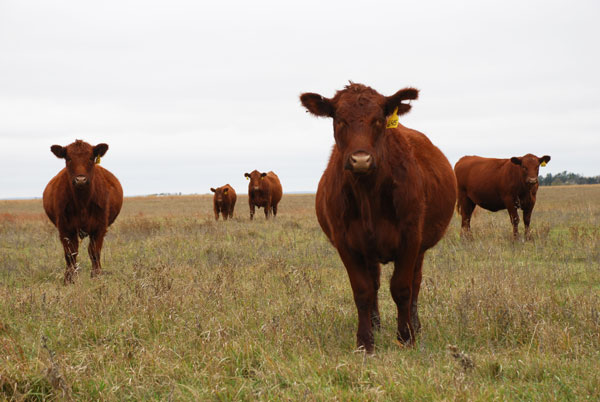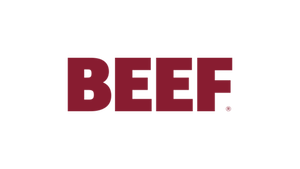Visual appraisal & genetic information BOTH needed to cull low-value animals
The future of genetic selection is exciting as genomics become more useful and available to commercial cattle producers. That’s especially true when it comes to culling heifers.
December 21, 2017

By Tom Brink
EPDs have been around for a long time—40 years or so, in fact. And without a doubt, that production information has been hugely beneficial in improving the genetics of the U.S. cowherd. Indeed, by focusing on the desired traits that can be easily measured, we’ve come a remarkably long way.
This was especially true when it came to growth and size as we went through the 1980s and 1990s.We wanted heavier pay weights (a good thing), but for a while the industry let cattle get too big while pursuing growth. Time and experience made us wiser, and so while seedstock producers have continued to emphasize growth, the approach has changed.
The more recent past has been about finding outlier animals that grew rapidly to a year or 18 months of age, then slowed down and matured at an acceptable size. Breeding such antagonistic traits into a single animal was not easy and took time to achieve.
Now, however, we have become well accustomed to curve-bender bulls whose progeny grow fast early on, but mature at an average or even below-average size. The industry now has bulls that excel at producing both steers for the feedlot and heifers for the replacement pen. We no longer need to accept a large mature size to get rapid growth. Nor must we tolerate slow growth animals to be assured of moderate mature sizes. When you think about it, that is a remarkable genetic accomplishment.
Along the way, breeders also successfully decoupled birth weights and growth. It is now common to see bulls with good calving ease that still produce calves which are competitive in both pre- and post-weaning growth. Not every bull available can do this, of course, but an increasing number are up to the task.
Here is a phenotypic attribute that has also seen great improvement during the past couple decades. Remember when finding sires with adequate depth and spring of rib was difficult? Twenty years ago, there was no overabundance of bulls that were deep ribbed and deep flanked, while also demonstrating that bold-sprung look most of us favor.
Back in the day, deep-bodied bulls were too often slab-sided and flat. In some breeds, pencil-gutted bulls were everywhere. Fast-forward to today and this is not much of a problem. Lots of bulls are deep and bold in their rib shape, which provides a wider range of choices and frees up producers to focus on other traits and characteristics they choose to work on within their breeding programs.
These are all examples of genetic progress that are real and tangible. Success came slowly, but it came nonetheless. And because of these efforts, our industry has a much stronger genetic foundation to build on in the years ahead.
Shifting from history to looking ahead, the next question logically becomes, “What path should our genetic improvement efforts follow during the rest of this decade and all though the next? What approach should we take to make further progress, and do it in a wholly constructive manner?”
Linear trait selection not as important today
First, the need to continually increase EPD traits like weaning weight, yearling weight and milk in a purely linear fashion has decreased.
Some cattle in the overall population still need more growth and more milk, but the top end of the bell curve is already pretty high for those traits. A greater need in genetic selection going forward is to eliminate bottom-end performers.
Diligently culling the low end of the bell curve for important traits is, perhaps, the next big thing in beef cattle selection. Eliminating below-average animals and multiplying those ranking above average offers real opportunity, both genetically and economically. But how can we do that?
The answer? Cull bottom-end heifers in every way possible.
Culling bottom-end heifers may not sound new, but the way we go about heifer selection is about to take a big jump forward. To explain, let’s look at the heifer culling and retention process as it takes place currently.
Heifer selection is critical to herd improvement in seedstock and commercial herds alike. When it comes to picking replacement heifers, we are accustomed to culling the bottom end for those attributes we can visually see and/or easily measure. We cull dinks and bad attitudes, along with heifers that have bad feet and legs and otherwise poor structure or phenotype. We cull heifers that ratio poorly in important traits, like weaning weight. We cull heifers whose dams have bad udders, dams that calve late, or have other physical problems. In fescue country, we cull heifers that do not shed hair very well. We might even cull heifers that don’t breed in the first 45 to 60 days of the breeding season.
The list could go on, and there is no question that these culling practices affect our long-term success. We need to keep diligently culling for these observable, physical traits, because we do not want to propagate any subpar genetics into future generations of our herds. But our efforts should not stop there.
Though still fairly new on the scene, DNA can also play a key role in this process by helping to identify heifers with poor genetics for the traits we cannot see. For example, suppose a group of commercial Red Angus heifers are DNA tested and those heifers that rank in the bottom 30% of the breed for multiple important traits are eliminated no matter how good they look. Heifers that rank low in only two or three DNA-quantified traits are given a pass, but those ranking toward the bottom of the bell curve in five, six, or more traits are culled with no questions asked. Then, we apply our normal selection criteria to those heifers remaining in the replacement candidate group.
Would this be an effective way to incorporate DNA technology along with visual appraisal in the heifer selection process?
Yes, indeed. This combination will be an exceedingly powerful pathway toward genetic progress in heifer selection that avoids extremes. Look for the most progressive producers in the business to rapidly engage this approach in the years ahead, while continuing to purchase and use the best bulls they can find.
Brink is CEO, Red Angus Association of America
You May Also Like



